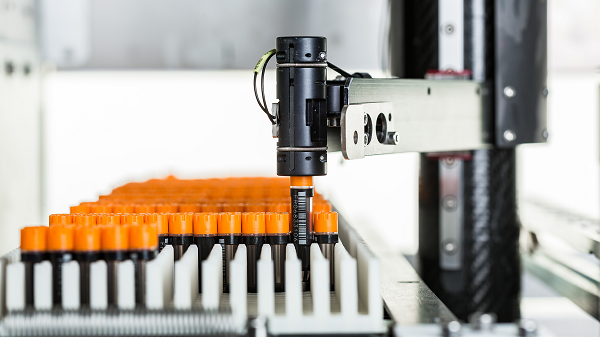The proof of the research is in the bio-specimens
“It’s a slow process and difficult to measure, but it is not what any one person or biobank does,” says Professor Jennifer Byrne. “There are opportunities for everyone to catalyse change.”
Samples of human tissue, blood, DNA and tumour cells are vital to biomedical research. Yet there is evidence that about half the pre-clinical research conducted cannot be reproduced, in part due to the poor management and condition of research “ingredients” such as biospecimens.

“Conducting biomedical research, and particularly laboratory research, is very difficult and there are a lot of things that can and do go wrong,” says Professor Jennifer Byrne, Director of Biobanking with NSW Health Pathology, which manages the largest biobank in the Southern Hemisphere.
“An influential paper published seven years ago estimated that about 50% of research investments into pre-clinical research is towards irreproducible results, and the major reason was the quality of reagents and standards. It’s like when you are cooking – if you don’t start with the right ingredients, it’s all downhill from there. Similarly, compromised biospecimens can undermine the validity of research and its potential for re-use.”
But the team at the NSW Health Statewide Biobank is working hard to rectify that – and lift industry standards – through a program of education and workforce development.
Better quality assurance and control
In smaller biobanks, fewer staff can mean that quality assurance and control measures are lacking. “In a larger biobank, you generally have enough staff to have a dedicated quality control manager, but smaller biobanks might only have one or two people performing multiple roles,” Byrne says. “The danger is that samples may not be stored well, or might degrade, and then they may not truly reflect what is actually happening in a living person. It’s in the interests of everyone to raise biobanking standards, so that good samples enable good research.”
Through its popular virtual seminar series, the NSW Health Statewide Biobank has been delivering sessions to the biobanking community for the past two years. Topics such as data linkage, informed consent, clinical trials, participant access to genetic information, the ethics of biobanking and research integrity have all been covered.
“The sessions have been very popular and we are looking at how we might repurpose some of the material for an international biobanking education program,” Byrne says. “It’s a great way to talk to our biobanking community and to invest in workforce development. We are also supporting a project led by the national biobanking association – the Australasian Biospecimen Network Association – to offer support and encouragement to those doing higher degree research into biobanking.”
Certification through education
Another important means of quality improvement is the biobank certification program the NSW Health Statewide Biobank has introduced. Once registered, biobanks commit themselves to a program of continuous improvement.
“It offers biobank managers a choice of education modules,” Byrne says. “They gain access to recommended operating procedures for most aspects of biobanking activity – from privacy and security and facility design, to biospecimen processing, storage and management. They then use this framework to undergo certification.”
More than 55 of the State’s biobanks are now registered for certification and 16 are certified, including the Sydney Sleep Biobank at the University of Sydney. Biobank project manager Nina Sarkissian says she readily embraced the opportunity.
“Being part of a robust biobanking framework, complying with national and international biobanking standards, and receiving support from biobank experts has provided strong credibility to our project,” she says. “The certification program has provided the Sydney Sleep Biobank with a strong platform for creating a world-class biobank with high-quality collections (clinical/research data and samples) across all participating sites through education of best practices and standard operating procedures. The entire process was straightforward to follow, and the support from the team was excellent.”
“Ultimately, we hope all these measures help to raise the standards of biobanking in NSW,” Byrne says. “It’s a slow process and difficult to measure, but it is not what any one person or biobank does. There are opportunities for everyone to catalyse change. The first thing is to have an awareness of the importance of standards and to talk about them. Then the certification process is a very tangible system of improvements.”
Updated 3 years ago